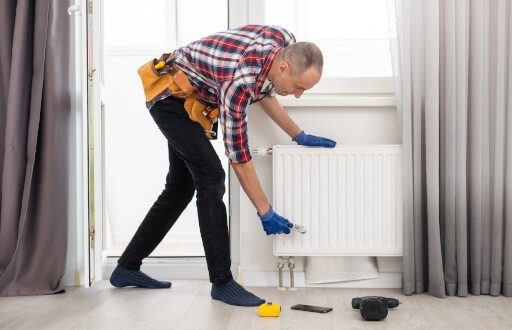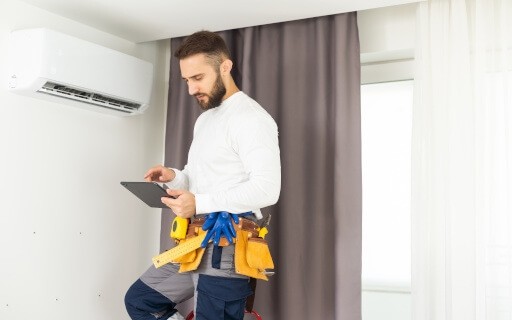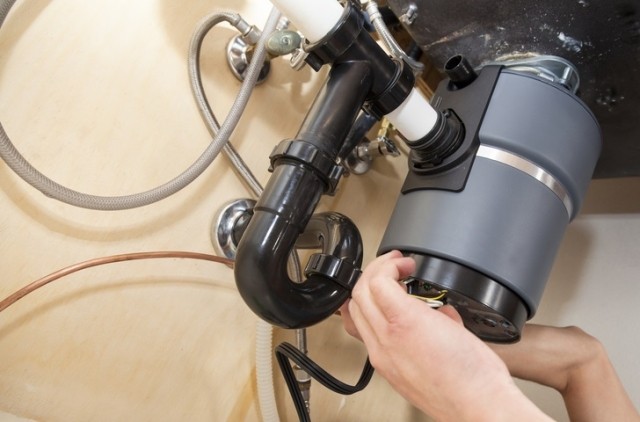
In this article: This guide helps landlords navigate wear and tear in rental properties. Get examples, tips on how to distinguish wear and tear from property damage, and insights into the lifespan of various property features.
Is it normal wear and tear, or is it property damage? Sometimes, it can be difficult to tell. According to the Department of Housing and Urban Development (HUD), normal wear and tear is the deterioration that occurs naturally over time through use. Maintaining your rental home is crucial to your success as a landlord. When tenants move out, you may notice changes in the property's condition. Identifying whether these changes are due to normal wear and tear or actual property damage is vital for proper property management and ensuring tenant accountability.
Normal Wear and Tear vs. Property Damage
What is normal wear and tear?
Normal wear and tear happens naturally over time with any tenant, even with care and regular maintenance. It includes things like faded paint, worn carpet, and minor scuffs or marks on walls. Normal wear and tear is expected, and it is not the tenant's responsibility to fix or pay for it. As a landlord, it is important to understand what constitutes normal wear and tear to avoid any disputes with your residents.
According to HUD, examples of normal wear and tear include:
- Fading, peeling, or cracked paint
- Slightly torn or faded wallpaper
- Small chips in plaster
- Nail holes, pinholes, or cracks in the wall
- Door sticking from humidity
- Cracked windowpane from faulty foundation or the building settling
- Floors needing a fresh coat of varnish
- Loose or worn cabinet handles
- Carpet faded or worn thin from walking
- Dirty or loose grouting and bathroom tiles
- Worn or scratched enamel in old bathtubs, sinks, or toilets
- Rusty shower rod
- Partially clogged sinks caused by aging pipes
- Dirty or faded lamp or window shades
- Slight scuff marks
What is considered property damage in a rental?
Normal wear and tear will happen, and as a landlord, you are responsible for returning the house to its original state. But when dealing with property damage, the tenant is responsible, and if that’s the case, their security deposit will go towards repairing those damages. Below are some examples of rental property damage according to HUD.
- Gaping holes in walls or plaster
- Dozens of nail holes
- Drawings, crayon markings, paint, or wallpaper that the landlord did not approve
- Seriously damaged or ruined wallpaper
- Chipped or gouged wood floors
- Doors ripped off hinges
- Broken windows
- Missing fixtures
- Holes in the ceiling from removed fixtures
- Holes, stains, or burns in carpet
- Missing or cracked bathroom tiles
- Chipped and broken enamel in bathtubs and sinks
- Clogged or damaged toilet from improper use
- Missing or bent shower rods
- Broken or cracked mirrors
- Torn, stained, or missing lamp and window shade
Understanding these distinctions, along with routine maintenance, helps landlords ensure proper property management, prevent potential damage, and hold tenants accountable, ultimately protecting their investment and maintaining rental property standards.
What Is Routine Maintenance?
Routine maintenance refers to the regular upkeep and repairs that are necessary for maintaining a property's condition. It includes tasks such as landscaping, cleaning, and minor repairs that help keep the property in good working order. You'll want to make sure the utilities are working as expected, clean filters, and change the batteries in smoke alarms. Fixing any minor issues during routine maintenance can help prevent larger problems later on, and it gives you a chance to check in on the property and catch any issues before they get out of control. Just make sure you follow your state and local laws regarding giving proper notice before entering the property. If you haven't checked out how Apartments.com helps you track maintenance, you're missing out! We have a comprehensive maintenance feature that allows you to schedule and track all your maintenance tasks in one place.
How Do I Distinguish Between Normal Wear and Tear and Property Damage?
Distinguishing between normal wear and tear and property damage can be tricky, but here are some factors to consider:
How long did the tenant live in your rental?
Considering the length of the tenancy is essential. For example, a tenancy that is a few months may have less wear and tear, while a tenancy that is a year or more will have more wear and tear and potentially some property damage.
How old is your rental home?
If your rental home is older, you will naturally have more wear and tear than one built in the last three years.
Did you have open communication with your tenants?
Communicating openly with your tenants can help you catch easy fixes like paint chipping or loose cabinet handles. If you use Apartments.com Rental Tools, your tenants can report maintenance issues and communicate with you about the ongoing issues.
Did you consider how a detailed lease agreement can help protect your rental property?
The best thing you can do as a landlord is to include everything in the lease. You can even include a stipulation in the lease agreement that outlines the responsibility for damage beyond normal wear and tear. With Apartments.com Rental Tools, you have the ability to generate a fully customizable, state-compliant lease in just minutes. This tool not only allows you to add specific stipulations but also enables you to upload your own lease documents, ensuring that your unique requirements are met effortlessly.
What Is the Life Expectancy of Features in a Rental Property?
Life expectancy varies, and the amount you can charge for damage relies heavily on the age of the item. For example, if a tenant’s pet damages a five-year-old carpet beyond repair, and its life expectancy is ten years, then the landlord can only charge the tenant half the cost to replace the carpet. However, anything damaged beyond repair is considered excessive property damage, not normal wear and tear.
Luckily, HUD has a list (Appendix 5D) of various items and their life expectancy:
- Interior Painting – Flat: 3 years
- Window Shades, Screens, and Blinds: 3 years
- Plush Carpeting: 5 years
- Senior Citizens: 7 years
- Interior Painting – Enamel: 5 years
- Senior Citizens: 7 years
- Tiles or Linoleum: 5 years
- Senior Citizens: 7 years
- Hot Water Heaters: 10 years
- Air Conditioning Units: 10 years
- Refrigerators: 10 years
- Ranges: 20 years
Ultimately, understanding the life expectancy of your rental property's features is essential for accurately assessing damage costs and distinguishing between normal wear and tear and excessive damage over time.
What is normal wear and tear after 2 years?
Understanding the difference between normal wear and tear and actual property damage is crucial for landlords. After two years of a tenant living in your rental property, some signs of use are to be expected. This is considered normal wear and tear. Normal wear and tear after two years may include minor issues such as:
- Faded paint
- Lightly scratched hardwood floors
- Worn carpet
- Slightly loose door handles
- Minor wear on kitchen countertops
- Light stains on bathroom fixtures
Recognizing these signs can help you manage your rental property more effectively and maintain a good relationship with your residents.
What is normal wear and tear after 3 Years?
It's important to understand what constitutes normal wear and tear in a rental property after three years. This period of time allows for certain changes in the property due to regular use. After three years, normal wear and tear may include more noticeable signs such as:
- More pronounced wear on carpeting
- Deeper scratches on wooden surfaces
- Fading of paint, which may need a fresh coat, especially if it's been more than 3 years since the last paint job
- Slight discoloration of bathroom fixtures
- Minor wear on kitchen appliances
- Wear and tear on window shades, screens, and blinds, which may need to be replaced as their life expectancy is typically 3 years according to HUD
What is normal wear and tear after 4 years?
After four years of occupancy, certain signs of usage become more apparent, but they still fall within the realm of normal wear and tear. Over a four-year period, you might notice:
- Paint may lose its original luster
- Wooden surfaces can develop minor scratches
- Carpeting shows signs of general use
Typical wear and tear over four years include daily use damage. However, significant damage like broken appliances or severe water damage often results from tenant negligence. Regular maintenance and understanding of normal wear after four years can aid in effective property management and tenant relationship building.
What is normal wear and tear after 5 years?
After five years, you’ll likely notice certain changes in the property due to regular, long-term use. Normal wear and tear after five years may include more noticeable signs such as:
- Significant wear on carpeting, which may need to be replaced as its life expectancy is typically 5 years according to HUD
- Noticeable scratches and possible warping on wooden surfaces
- Fading of paint, which may need a fresh coat, especially if it's been more than 3 years since the last paint job
- Discoloration or staining of bathroom fixtures
- Wear and tear on kitchen appliances, some of which may need to be replaced depending on their life expectancy
What is normal wear and tear after 10 years?
When a rental property reaches the ten-year mark, landlords should anticipate a certain degree of wear and tear. However, it's essential to distinguish between normal aging and excessive damage. After ten years, normal wear and tear may include more noticeable signs such as:
- Significant wear or damage on carpeting, tiles, wood floors, and any other flooring
- Noticeable scratches and possible warping on wooden surfaces
- Fading of paint/wallpaper
- Discoloration or staining of bathroom fixtures
- Wear and tear on kitchen appliances, some of which may need to be replaced depending on their life expectancy
- Possible replacement of hot water heaters, air conditioning units, and refrigerators, as their life expectancy is typically around 10 years according to HUD
What is normal wear and tear after 20 years?
After 20 years, normal wear and tear may include more noticeable signs such as:
- Carpeting, tiles, wood, or any other kind of flooring will need to be replaced
- Significant wear and possible warping on wooden surfaces, which may need refinishing or replacement
- Multiple rounds of paint/fresh wallpaper
- Replacement or significant repair of bathroom fixtures due to discoloration or staining
- Replacement of kitchen appliances, some of which may have needed to be replaced multiple times depending on their life expectancy
- Multiple replacements of window shades, screens, and blinds
- Replacement of any ranges since their life expectancy is 20 years, according to HUD.
Conducting routine maintenance and understanding the typical wear after 20 years aids in efficient property management, fosters renter relationships, and safeguards your investment.
How Do I Manage Normal Wear and Tear?
Effective normal wear and tear management requires a proactive approach by either you or your property manager. Below are a few tips on how to manage normal wear and tear:
-
Move-in inspection: Before your tenant moves in, you must perform a move-in inspection, take note of everything, and take pictures so that when your tenant moves out, you will know what’s different.
-
Regular maintenance: As a landlord, it wouldn’t be abnormal if you scheduled regular maintenance inspections to check on the state of your rental home. Before you enter your tenant’s home, check with your local and state laws to see how much notice you need to give your tenants before you enter the house.
-
Communication: It is essential to regularly communicate with your tenants about their responsibilities and expectations regarding property upkeep. Make sure your tenants understand what is considered normal wear and tear, and what is considered property damage.
Frequently Asked Questions
Who ultimately decides what is considered “normal” damage?
You and state laws play a crucial role in determining what damages are considered normal. As a landlord, you should send your tenants an itemized list of the damages and associated repair costs if you decide to retain a portion of the security deposit. Ensure that the money deducted from the security deposit is used solely to cover repair costs.
In cases where the security deposit does not cover the total cost of the damage or unpaid rent, you may need to take additional steps. This could involve sending a demand letter to the tenant outlining the remaining balance, or in some cases, you may need to take legal action to recover the remaining costs. Remember, always consult with a legal professional or your local housing authority to understand your rights and responsibilities in these situations.
When can I deduct from my tenant’s security deposit?
Security deposit laws vary slightly depending on each state, but generally, you are allowed to deduct from the security deposit for property damages and cleaning fees. Be sure to create an itemized list of damages and capture images. If you have any questions, contact a local real estate attorney for guidance.
Can a tenant contest a charge against their deposit?
In some states, tenants can sue you over deductions on security deposits. To avoid this, ensure you have proper documentation during the move-in and move-out inspections. If you miss something during the inspection, work with your tenant on an agreement before the situation escalates. This proactive approach can help prevent disputes and maintain a positive landlord-tenant relationship.
Does pet rent cover pet damages?
No, pet rent doesn’t cover damages. However, a pet deposit or a pet fee can cover these damages. Some state laws don’t allow you to take damages caused by pets out of the security deposit if the tenant paid a pet deposit or pet fee. Pet deposits are treated like security deposits, but pet fees are one-time and non-refundable. If you have any questions, you should speak with a real estate attorney or accountant for further clarification.
Protect Your Property and Prevent Property Damage with Screening Through Apartments.com
Preventing property damage begins with choosing the right tenant. If you're apprehensive about potential damage exceeding normal wear and tear, leverage the comprehensive tenant screening feature of Apartments.com's Rental Tools. This feature allows you to review potential tenants' criminal records, credit history, and eviction records, enabling you to make an informed decision and select the most suitable tenant.
In the realm of property management, discerning between normal wear and tear and significant property damage can be challenging. However, understanding these differences is crucial for maintaining your property's value, ensuring tenant retention, and establishing your reputation as a reliable landlord.
This article was originally published on August 24, 2023.











